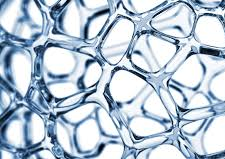Silica aerogel has many unique properties in the three-dimensional nanonetwork structure. It has broad application prospects in optics, heat, acoustics, microelectronics, high-power lasers, and other fields. It is another new type of silicon compound functional material after silica.
Silicon exists in many industrial solid wastes, and the utilization of silicon elements is an unavoidable topic in the resource utilization of industrial solid wastes. As far as silicon is concerned, it can create good economic benefits when used, but it forms secondary waste residue when discarded, causing pollution to the environment. There are many ways to comprehensively utilize silicon in industrial solid waste, including the production of water glass, silica, aerogel, etc. In order to provide some reference for the development of the industrial solid waste resource utilization industry, this is a brief introduction to the production process of silica aerogel.
Gel process
In the past 20 years, with the maturity of aerogel theory, the improvement and perfection of sol-gel technology, and the growing demand for aerogel materials in related industries, the aerogel industry has developed rapidly. The production of silica aerogels includes two methods, namely the sol-gel method and the alcohol-gel drying method.
The precursors of the sol-gel method are mainly methyl silicate, water glass, and ethyl orthosilicate. Due to the high toxicity of methyl silicate, it isn't easy to purify silica aerogels prepared from water glass, so ethyl orthosilicate is the most commonly used precursor. In recent years, with the development of science and technology, the purification technology for producing silica aerogels from water glass has achieved breakthroughs. Water glass has also been widely used as a precursor for the production of silica aerogels.
The sol-gel method adds an appropriate amount of water and catalyst to the precursor, forms a polymer through hydrolysis and condensation, and forms a network structure gel through aging treatment. During the gel formation process, some hydrolysed silicon undergoes a polycondensation reaction, and the unhydrolysed groups on the polycondensed oxygen chain continue to be hydrolysed. The production process controls the gel structure by adjusting the pH value of the reaction system to control the relative rate of the hydrolysis reaction (polycondensation reaction and polycondensation reaction during the hydrolysis process). Under acidic conditions, the hydrolysis rate is fast, and the system contains a large amount of silicic acid monomers, which is conducive to the nucleation reaction. The nucleation amount is large, and smaller-sized nuclei are easily formed. This smaller core size further results in the formation of a weak core, cross-linked low-density network gel.

Drying technology
The gel produced by the sol-gel method consists of an elastic solid network and a liquid in the network. Aerogels are produced by removing the liquid from the network.
Drying mechanism
To obtain aerogels, the liquid in the network should be eliminated without changing the structure of the original gel network. If it is dried directly, due to the influence of surface tension, only solid powder can be obtained, but the uncracked airgel material cannot be blocked. To solve this problem, appropriate drying techniques should be used. Currently, commonly used drying methods include supercritical drying, subcritical drying, freeze drying, differential drying, and atmospheric drying.
Drying technology
The gel has nanostructured pores on its surface. According to the drying mechanism, when the solvent is removed, large capillary forces will be generated, leading to the destruction of the gel structure. Therefore, how to eliminate capillary force and improve the drying method of aerogels has become an important part of basic research on aerogels. Supercritical drying can heat the drying medium to supercritical temperature, eliminate the capillary force that exists when the gel removes the solvent, and prevent the gel structure from collapsing after the solvent is removed.
The gel solid skeleton prepared by the sol-gel method is surrounded by a large amount of solvent (ethanol, a small amount of water and a catalyst). To obtain an aerogel, the solvent must be removed from the gel. Supercritical drying technology uses methanol, ethanol, isopropyl alcohol and benzene as drying media to remove solvents above the supercritical limit. Since drying is carried out under high temperatures and high-pressure conditions, equipment requirements are high, and there are safety risks in the drying process.
In order to minimize the risks of the drying process, low-temperature supercritical drying technology has been developed in recent years. Since carbon dioxide does not burn, explode or pollute the environment, its chemical inertness results in high purity of the prepared product. Carbon dioxide as a drying medium volatilizes at 31°C (lowering the critical temperature of low-temperature supercritical drying technology). The critical pressure and temperature of drying reduce safety risks.
Supplier
TRUNNANO is a globally recognized manufacturer and supplier of compounds with more than 12 years of expertise in the highest quality nanomaterials and other chemicals. The company develops a variety of powder materials and chemicals. Provide OEM service. If you need high quality Nanoparticle Silica Aerogel SiO2 Aerogel, please feel free to contact us. You can click on the product to contact us.


